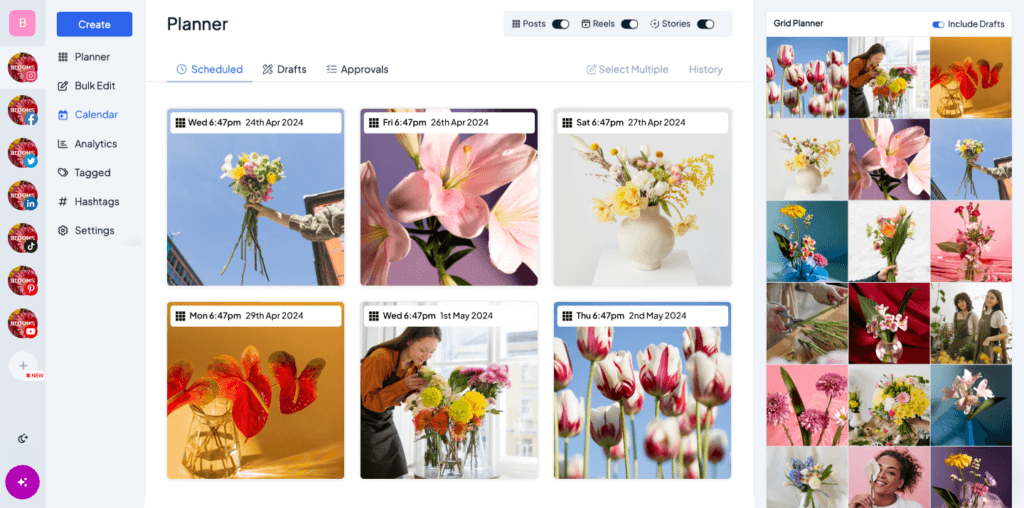Social media has become a crucial channel for customer service, with more and more users turning to platforms like Twitter and Facebook to get their questions answered and issues resolved. According to a survey conducted by Sprout Social, 90% of surveyed customers have used social media to communicate with brands, and 34.5% of customers prefer social media for customer service over other channels.
In this article, we’ll explore the best practices and tools for providing excellent social media customer service, so you can ensure your customers are happy and your brand’s reputation stays intact.
Why social media customer service matters?
Social media has revolutionized the way customers interact with brands, with customer service becoming a critical component of the social media sales funnel. In fact, it can have a significant impact on your brand’s reputation and customer loyalty.
According to a survey, 83% of customers who have a positive experience with a brand’s social media are likely to recommend the brand to others. However, it’s important to remember that those who have a negative experience, are also likely to share their views within their network. This means that negative interactions on social media can quickly spread and damage your brand’s reputation.
Social customer service is a crucial aspect of modern customer service, and it can have a significant impact on your brand’s reputation and customer loyalty. By supporting your customers on social media, you can turn satisfied customers into brand advocates and even attract new customers.
Best tips for social media customer service
1. Respond promptly:
Responding to customer inquiries and complaints in a timely manner is crucial for providing effective social media customer service. Customers expect quick responses on social media, with 42% of consumers expecting a response within one hour. Delayed responses can lead to frustration and negative sentiment towards your brand.
2. Personalize interactions:
Personalizing social media interactions can help to create a more positive customer experience and build brand loyalty. Using a customer’s name, for example, can make the interaction feel more human and less robotic. Personalizing responses can also help to build rapport with customers and make them feel valued.
3. Use a friendly tone:
The tone used in social media customer service interactions can greatly impact how customers perceive the brand. Using a friendly and empathetic tone can help to defuse tense situations and make customers feel heard and understood. On the other hand, using a confrontational or dismissive tone can worsen the situation and damage the brand’s reputation.
Visually plan your social content. Instagram, TikTok, Twitter, Facebook, LinkedIn + Pinterest
4. Provide helpful solutions:
Providing helpful solutions to customer inquiries and complaints is key to effective customer service in general. This means not only acknowledging the customer’s issue but also providing actionable steps to resolve it. Customers appreciate when brands go above and beyond to help them, which can lead to increased loyalty and positive word-of-mouth.
5. Monitor social media mentions:
Monitoring social media mentions of the brand is crucial for providing effective social media customer service. Brands should actively monitor social media channels for customer inquiries and complaints, as well as mentions of the brand in general. This allows brands to respond promptly and address any issues before they escalate.
6. Continuously improve:
Continuously improving social media customer service is essential for meeting evolving customer expectations and staying ahead of competitors. Brands should regularly gather feedback from customers and analyze metrics such as response time and customer satisfaction to identify areas for improvement. Additionally, brands should stay up-to-date on social media trends and best practices to ensure their approach remains effective.
Brands with great social media customer care
One of the best ways to learn about effective social media customer service is to look at examples of brands that are doing it well. Here are some of our favourite real-life case studies:
KLM:

The Dutch airline, KLM, is known for its excellent social customer care. They have a dedicated team of social media agents who respond to customer inquiries and complaints on social media within 1 hour. KLM also personalized its social media interactions with customers by using their first names and signing off with the initials of the agent who handled the interaction. This personal touch helps to create a more positive customer experience and build brand loyalty.
Zappos:

Zappos, the online shoe retailer, is known for its customer-centric approach to social media customer service. The company has a dedicated social media team that responds to customer inquiries and complaints within minutes, 24/7. Zappos also goes above and beyond to surprise its customers on social media. Such as, by sending personalized thank-you notes and gifts to customers who mention the brand on social media. This approach has helped to create a loyal following of customers who appreciate the brand’s commitment to exceptional customer service.
JetBlue:

JetBlue, the American airline, has won numerous awards for its social media customer service, including a “Social Media Genius Award” from Convince & Convert. The company’s social media team is known for its humour, empathy, and quick responses to customer inquiries and complaints. JetBlue also uses social media to proactively provide information and updates to customers during weather-related disruptions, which has helped to build trust and loyalty with its customers.
Nike:

Nike, the global sportswear brand, has used social media to provide personalized customer service to its customers. The company has a dedicated social media team that responds to customer inquiries and complaints on social media within hours. Nike also provides product recommendations and personalized training plans to customers based on their fitness goals and interests. This personalized approach has helped to create a more engaging and positive customer experience, which can lead to increased loyalty and sales.
Consequences of poor social customer service
Customers expect instant and helpful responses from brands on social media, and failing to meet these expectations can have significant consequences. By understanding these consequences, brands can efficiently use social media to help their customers.
1. Damaged reputation:
When negative comments or complaints go unanswered on social media, they can quickly spread and harm your brand’s reputation. Customers may see the lack of response as a sign of poor customer service, which can result in a loss of trust and loyalty. In addition, as previously mentioned, customers who have a negative experience with your brand on social media are more likely to share that experience with their followers and potentially with a wider audience. This can lead to a tarnished brand image and potentially lost business.
2. Missed opportunities:
Social media provides an opportunity to engage with customers and potential users in a meaningful way. Failing to respond to customer inquiries or complaints on social media can result in missed opportunities. To address customer needs, provide helpful information, and potentially turn dissatisfied customers into loyal ones. By being responsive on social media, brands can demonstrate that they value customer feedback and are committed to providing excellent customer service.
3. Decreased customer satisfaction:
Social media has become an important channel for customer support, and customers expect timely and helpful responses from brands on these platforms. Failing to meet these expectations can lead to decreased customer satisfaction and potentially lost business. Customers may feel ignored or undervalued if their inquiries or complaints go unanswered, and this can impact their perception of the brand as a whole.
4. Increased costs:
Failing to address customer needs and complaints on social media can lead to increased costs. This can be because of handling customer issues through other channels, such as phone or email. This can also result in increased staff workload and potentially decreased productivity. By contrast, effective social media customer service, coupled with a virtual call center, can help to reduce the workload on other customer support channels and lead to cost savings over time.
To summarize
Social media customer service is becoming increasingly important for businesses that want to build strong customer relationships and maintain a positive brand reputation. By following these best practices, not only will businesses provide exceptional customer care but also delight their customers. It will also, help drive business success like it did for brands like KLM, Nike and Zappos. With the right approach and mindset, social media can be a powerful tool for building long-lasting relationships with customers.
FAQ
How does social media customer care work?
Social media customer care works by taking advantage of your social to communicate and support both existing and new customers.
Which channels are best for customer care?
The best channels to use for customer care will depend on your audience and business. With the most common channels being Facebook, Instagram and Twitter.
Are there tools to help me with social customer service?
Yes, there are several tools you may want to use to make this process easier.
Join 50,000 other subscribers. Getting inspired & supercharge your social media marketing with tips from our experts. Prepare for upcoming trends and social media holidays before they happen.












